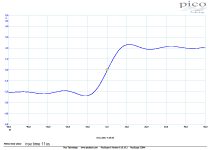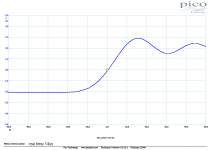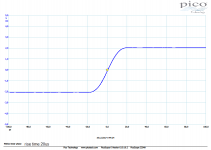Regarding Digital, data converters have gotten a lot better over the years, although better professional devices aren't cheap.
My experience goes something like this:
The first generation of CD players were pretty ordinary. Worst was the Sony CDP101. Philips/Marantz machines, with their oversampling, dual DACs and gentle filtering were far superior, but still not great sounding.
By the late 1980s, Marantz (with the CD94), Onkyo, Yamaha, Denon and the other big Japanese companies were all releasing fabulous sounding, beautifully constructed players, employing the best multi-bit DACs and careful component selection (essential with multi-bit DACs) to achieve excellent sound quality. My favourite, the Marantz CD-80 is a derivative of the CD94. It still stacks up well today (after appropriate OP amp swaps).
Soon after, manufacturers discovered the joys of serial data streams and the dramatic reduction in costs that ensued. For a very long time, serial data machines (aka: single bit) is all most people have been able to buy. In fact, that is all most people STILL buy. In the last few years, there has been a resurgence in multi-bit machines and, finally, prices have begun to fall.
Interlude #5:
Ultra low noise amplifiers
If you think those decades old Rohm devices are low Rbb/low noise, fast forward to 2017. Check out those Zetex devices!
Link courtesy Joachim Gerhard.
Jan
Keep up Jan, I mentioned those on here a couple of weeks ago. 😛
No one speaks about amplifiers with 10us rise time. This would be ridiculous.
Actually, "we" do. Frequently. Few valve amplifiers (and specifically, no SET) can hope to achieve a 10uS rise time. Quite a few Class D amps would fail such a test as well.
Sound sources are in question. My point was that "square" 10kHz with 10us rise and fall time would be useless as a test signal.
Actually, it is a pretty good test signal (though my bench generator is more like 100nS rise time). And such a signal tells me a great deal about whatever I happen to be testing.
I was told that 10 us was meant for a sound source, not for a test signal. Speaking about sound sources, we should take into account relationship between time and frequency domain.
Agreed. And there's the problem with 16/44 digital. The phase relationships can be damaged by a long rise time like 23uS. As John has stated, somewhere less than 15uS is probably entirely adequate for critical listening.
Tomorrow I can post some time response examples of digital sources with higher sampling frequency.
I agree that higher sampling rates are desirable.
...I don't usually like them myself, but some people like the sounds of vintage tape machines, compressors, EQs, etc., to try to get back to more of a colored analog type of sound...
Yes. That's another thing I tend to repeat. Not only does everyone hear a little differently, but I believe that people are bothered more by certain types of imperfections in sound reproduction and less by others; be it record noise, or digital "edge." That's why we can never agree on this stuff. It's just the unqualified "digital/analog is terrible" declarations make me grouchy sometimes. 😡
Which test record did they use? I didn't think any of them went that high? Not that it matters unless you are JC 🙂I have a review from Audio Magazine on the 17D, where the measured frequency response is commendably flat out to 60kHz. Fitted in a suitable arm (the DV507 is a superb match) the 17DIII will track perfectly.
"Surpassed"? Not even remotely close.
It was my only CD player for 20 years. It's replacement, a cheap DAC. I don't miss it. The sound was pleasant but to me but not special by 2017 standards. Plus I don't actually put CDs in slots any more. We clearly have different priorities in sound.
(this is not to say I do not have many happy memories of listening to music on it, just it was overtaken by progress and my use cases).
Which test record did they use? I didn't think any of them went that high? Not that it matters unless you are JC 🙂
Probably STR-112. One can infer the frequency response of a signal from the rise time of a square wave. That said, there have always been other, more direct, methods of measuring the frequency response of a phono cartridge.
It was my only CD player for 20 years. It's replacement, a cheap DAC. I don't miss it. The sound was pleasant but to me but not special by 2017 standards. Plus I don't actually put CDs in slots any more. We clearly have different priorities in sound.
As I stated elsewhere, it wasn't until I re-listened to the CD-80 a couple of years back, that I realised just how good the player was. Years of listening to mediocre, single bit DACs had ruined me.
(this is not to say I do not have many happy memories of listening to music on it, just it was overtaken by progress and my use cases).
Oh, I'm sure there are better machines available now, but the cost would be higher than you'd imagine.
We all listen to CD or even more compromised audio quality mostly. How could we avoid it? TV, radio, MP-3, etc is everywhere! However, what does it take to make really truly audio quality? So far, 15-30ips analog tape is good to great, SACD has a chance, 96K-192K also has a chance, and so does a vinyl playback system with an MC cartridge with 40K+ self resonance. Anything less is bound to be a compromise, including CD, cassette tapes, MP-3 (of course), etc. I listen all day to 'compromised' audio sources, usually fm radio, cable tv, etc. but that is not my 'reference'. AND I normally listen through Sequerra Met7 speakers, just like Scott Wurcer. BUT I do not consider this as 'all there is that is necessary'. '-)
If you can find the article I would be interested as I've not seen any documentation on how to get any sort of accurate measurement above 20kHz. The latest ortofon test record has a sweep to 50kHz but barn door error bars above 20kHz. As did the famous B&K QR2010.
As I said £270 of Marantz is better than red book in all parameters. If I get space one day might get the kids to steal the CD80 back from the ex 🙂
As I said £270 of Marantz is better than red book in all parameters. If I get space one day might get the kids to steal the CD80 back from the ex 🙂
If you can find the article I would be interested as I've not seen any documentation on how to get any sort of accurate measurement above 20kHz.
Bill there might be some stuff in the B&K Technical Journal using electrostatic actuators. As for LP's the constant velocity sweeps and flat preamp measurements seem to be the best bet since the RIAA pre emphasis at 50K is a real killer.
i don't understand. You need a CD 'Reader', not a player. Copying bits, not a stream.
Thanks. I was wondering how I did it.
If you can find the article I would be interested as I've not seen any documentation on how to get any sort of accurate measurement above 20kHz. The latest ortofon test record has a sweep to 50kHz but barn door error bars above 20kHz. As did the famous B&K QR2010.
As I said £270 of Marantz is better than red book in all parameters. If I get space one day might get the kids to steal the CD80 back from the ex 🙂
What is the model number of your Marantz?
Of course, the more bandwidth the better for best phase response, but I like to be realistic about my sources that were available even 40 years ago. Some, like 30ips analog recording, disc cutting, and even practical (quiet enough) microphones have not improved much in the last 40 years beyond my standard of 40-50KHz or approximately a 10us rise-time.
Which microphones are you thinking have 40 KHz response? The small diaphragm mikes that go that high are all pretty noisy. Maybe for close miking od some instruments but not used for the typical stereo pair type applications. Most recordings are made using large diaphragm mikes with poor response above 10 KHz. True 40 years ago and still true. And those recording sound great when made by a skilled artist.
Probably STR-112. One can infer the frequency response of a signal from the rise time of a square wave. That said, there have always been other, more direct, methods of measuring the frequency response of a phono cartridge.
B&K introduced a technique using a small accelerometer as an exciter so you can sweep as high as you like and no wear on the record. I believe this is the "go to" method used today. I know Lyra has one. Those plots were probably made that way. You could argue that real world records may not work the same (there are a ton of issues about stylus radius "scanning losses" etc. to be resolved) but it makes the engineering and manufacturing much easier.
You're right, but some exists:Which microphones are you thinking have 40 KHz response? The small diaphragm mikes that go that high are all pretty noisy. Maybe for close miking od some instruments but not used for the typical stereo pair type applications. Most recordings are made using large diaphragm mikes with poor response above 10 KHz. True 40 years ago and still true. And those recording sound great when made by a skilled artist.
Capsule microphonique MK 2 - Graphiques - SCHOEPS.de
GRAS 40AC 1/2" Ext. Polarized Free-field Microphone, Wide Frequency
QTC40 - Earthworks Audio
Some little cheap Electrets capsules can be very good at this, too.
Last edited:
As promised, I did some measurements of rise time on a DAC with proper implementation of digital filters, at 96kHz sampling frequency. The results are as follows:
1) linear phase brickwall filter, Tr = 11us approx.
2) minimum phase brickwall filter (no pre-ringing), Tr = 14us approx.
3) linear phase filter with some decent roll-off between 20kHz and 48kHz added to eliminate overshoot, Tr = 20us approx.
However, IMO the simple rise time value is quite pointless, without more complex info provided. Measurements attached.
1) linear phase brickwall filter, Tr = 11us approx.
2) minimum phase brickwall filter (no pre-ringing), Tr = 14us approx.
3) linear phase filter with some decent roll-off between 20kHz and 48kHz added to eliminate overshoot, Tr = 20us approx.
However, IMO the simple rise time value is quite pointless, without more complex info provided. Measurements attached.
Attachments
Keep up Jan, I mentioned those on here a couple of weeks ago. 😛
Nothing better than a few repeats to rub it in. That's all some here do anyway ;-)
Jan
Last edited:
As promised, I did some measurements of rise time on a DAC with proper implementation of digital filters, at 96kHz sampling frequency
Thanks Pavel. A meaningful contribution as always.
I will ask you if you perceive any difference when you listen to music through these three filters (if yes, what kind of difference) ?
George
- Status
- Not open for further replies.
- Home
- Member Areas
- The Lounge
- John Curl's Blowtorch preamplifier part II


